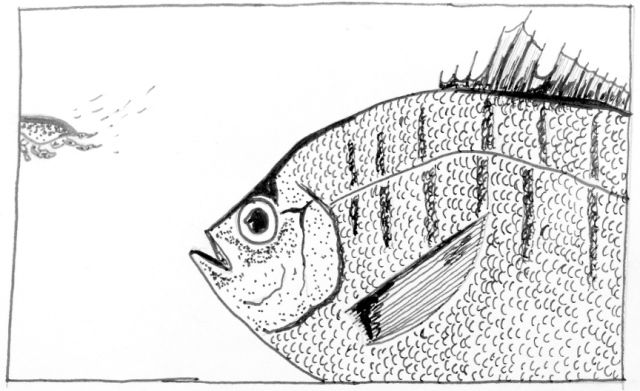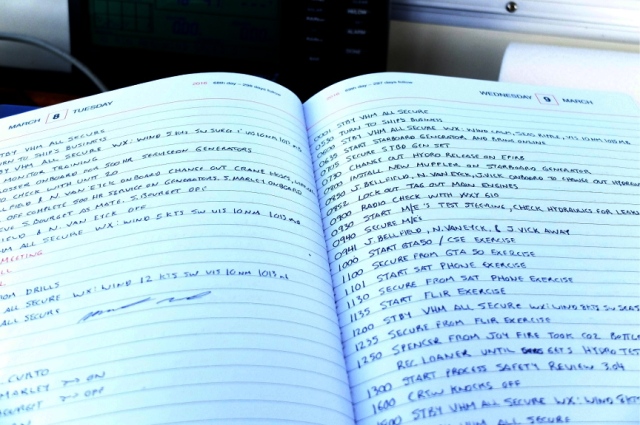I draw because it’s fun. Drawing is a way to pass the time while I am stationed at sea. It is productive, cheap and quenches my creative thirst. The path that led me to becoming an illustrator of maritime images holds its roots in an ancient tradition, that of the scribe.

Medieval scribes, usually monks, were tasked with the tedious duty of making handwritten copies of manuscripts and books in the times predating Gutenberg’s printing press. Projects that could be accomplished today in several hours with a $100 Epson printer purchased from Best Buy would have taken these scribes years to replicate. They would sit for hours while struggling with cramped hands, clenching bird quill pens and writing on fickle parchment made from dried animal skin.
To combat the draining monotony of these tasks, the scribes would often doodle on inside pages. These pages would later be glued to hard bound covers, hiding their often whimsical drawings inside the completed manuscripts they finished. At a time when books cost the equivalent of a certified used car in today’s currency, these illustrations were a dangerous act of self expression. Scribes that dared to draw on the inside margins exhibited the same artistic defiance that can be seen in graffiti artists today.

No strangers to self-deprivation and sacrifice, medieval scribes used doodling to energize and lighten the daunting task of monotonous writing. Reproducing text can be one of the most tedious and mind numbing undertakings. I am no stranger to this.
Merchant ship captains have always kept logbooks to record departures, crossings, events at sea, weather conditions and lots of other pertinent nautical information. The United States Coast Guard mandates that all inspected vessels keep a ship’s log. This task must be completed daily. It also serves as a legal document which can be used in court for cases that involve collisions, injuries, and fatalities at sea. The captain of the vessel is responsible for the log, but the tedious transcription usually falls on the mate. The captain signs the log at the end of every day and the document becomes legal.

As a mate, I often found myself tied up in the role of the scribe. I would translate the captain’s gibberish, crudely jotted on a yellow legal pad, into legible and chronological entries on the ship’s log. Penmanship became extremely important to me for the first time since college. I took immense pride in writing each letter in a clear, consistent font.

With writing implements readily available, and my manual skills honed from endless transcription, doodling became a natural creative outlet.
Drawing has some other amazing benefits as well. In a January 2010 article in Applied Cognitive Psychology, Jackie Andrade described a study where subjects listened to recorded phone conversations while doodling. Another control group listened to the same message without doodling. After the recording was finished, the subjects were given a quiz on the information they heard over the phone. Turns out, the experimental group of doodlers retained 29% more information from the conversation based upon their higher quiz scores. Employers concerned about workers being distracted from their duties need not worry. Andrade stated that in most dual-task situations, doodling while working can be beneficial.
Illustration is also important because it is subjective. With cameraphone technology, it is easier than ever to snap a picture and share it on social media, showing the world a direct representation of what the photographer (if you can even legitimately call them that) saw. The only creative variation in these instant images is a limited choice of computer generated filters that social media platforms feature. Illustration is an ancient and organic opposite to this recent phenomenon.
When I draw a large mooring line wrapped around a cleat or render a crude sketch of a man casting for fish in the raging surf, I don’t want you to see exactly how these images appeared to me when I drew them. I want you to see what I thought they looked like. These illustrations are a representation of my life at sea and a glimpse into my subjective consciousness.
